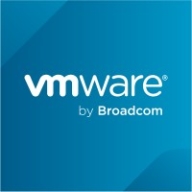

FME and Spring Cloud Data Flow compete in data integration and management. Spring Cloud Data Flow appears to have the upper hand with its superior capability in modern cloud-native architectures.
Features: FME offers an intuitive graphical user interface, diverse connectors for different data sources, and powerful spatial data handling capabilities. Spring Cloud Data Flow provides seamless real-time streaming, exceptional integration with Kafka and Elasticsearch, and a flexible microservices orchestration framework enabling efficient task execution.
Room for Improvement: FME could benefit from improved support for general-purpose data processing beyond spatial data and enhanced cloud-native integration. Better native cloud support and more comprehensive open-source documentation could enhance its appeal. Spring Cloud Data Flow might improve by refining its complex architecture to simplify user onboarding, expanding support for proprietary plugins, and boosting usability for non-developers through enhanced graphical interfaces.
Ease of Deployment and Customer Service: FME offers a straightforward deployment process with excellent customer support, particularly for projects involving spatial data. Spring Cloud Data Flow features robust scalability and cloud service integration but requires significant technical expertise for deployment due to its complex architecture. Customer support is effective for both products, though Spring Cloud Data Flow demands cloud-specific knowledge.
Pricing and ROI: FME typically involves a higher upfront license cost but offers substantial ROI with its spatial data capabilities. In contrast, Spring Cloud Data Flow leverages open-source frameworks for lower initial costs, though its ROI is heavily reliant on the existing infrastructure and processing requirements. Its scalable pricing reflects cloud resource utilization.
| Product | Market Share (%) |
|---|---|
| Spring Cloud Data Flow | 1.2% |
| FME | 1.6% |
| Other | 97.2% |


| Company Size | Count |
|---|---|
| Small Business | 2 |
| Midsize Enterprise | 1 |
| Large Enterprise | 4 |
| Company Size | Count |
|---|---|
| Small Business | 3 |
| Midsize Enterprise | 1 |
| Large Enterprise | 5 |
FME is the data integration platform with the best support for spatial data. Run workflows on the desktop or deploy them in a server or cloud environment.
Spring Cloud Data Flow is a toolkit for building data integration and real-time data processing pipelines.
Pipelines consist of Spring Boot apps, built using the Spring Cloud Stream or Spring Cloud Task microservice frameworks. This makes Spring Cloud Data Flow suitable for a range of data processing use cases, from import/export to event streaming and predictive analytics. Use Spring Cloud Data Flow to connect your Enterprise to the Internet of Anything—mobile devices, sensors, wearables, automobiles, and more.
We monitor all Data Integration reviews to prevent fraudulent reviews and keep review quality high. We do not post reviews by company employees or direct competitors. We validate each review for authenticity via cross-reference with LinkedIn, and personal follow-up with the reviewer when necessary.